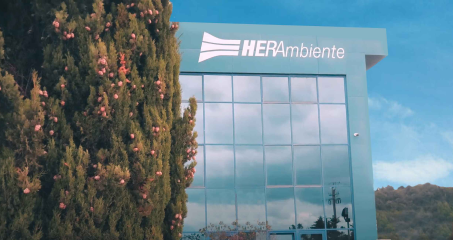Overview
The waste storage plant is located in Castelfranco di Sotto in the province of Pisa. It treats non hazardous special waste also from outside Tuscany. The waste to be stored is delivered in bulk or in big bags.
The Castelfranco di Sotto storage plant is composed of three different sections: one dedicated to storage, one dedicated to grinding and finally there is section where the selection of waste is carried out. The waste destined for the plant is checked for conformity and sortable waste is separated from non sortable waste. The former is sent for the selection or storage process and the latter is sent for disposal.
Page update 4 June 2021
The plant consists of the following sections: storage area, grinding plant, selection plant. Specific waste control procedures are applied both when contracts are drawn up with customers (the approval phase) and as disposals are received at the platform.
Correspondence between the quality of the incoming waste and the respective approval is verified by means of visual and analytical checks carried out periodically and spot sampling the waste. Once the waste has passed the control phase, it is sent for processing in accordance with the approval.
Incoming waste is divided into potentially selectable and non-selectable.
Non-selectable waste is checked, ground to reduce its volume and then sent for disposal; in the event that reusable materials are found, they are recovered. Waste that can be selected for recovery is divided into two further categories: waste destined for the selection plant and waste destined for storage as it is already homogeneous. Waste destined for storage is sorted to remove any extraneous fractions and, if necessary, it is ground to reduce its volume, before being stored in special areas from which it is subsequently sent to off-site destinations. Waste destined for the selection plant is first sorted by mechanical means, then ground with a mobile grinder and fed into the selection plant. These operations allow us to recover materials such as wood, plastic, paper and cardboard, ferrous and non-ferrous metals, electric cables, etc. All operations are carried out on waterproofed floors and equipped with leachate collection.
Selection plant
The selection system consists of a conveyor belt that feeds the waste into a vibrating screen that serves to separate the fine fraction. From the vibrating screen, the waste passes into the selection booth where the operators sift the various recoverable fractions and place them separately in dedicated bays. The unselected fraction of the waste passes under an electromagnet that removes the ferrous materials it contains. From the different bays the selected waste is placed in a press that packages it in bales.
Correspondence between the quality of the incoming waste and the respective approval is verified by means of visual and analytical checks carried out periodically and spot sampling the waste. Once the waste has passed the control phase, it is sent for processing in accordance with the approval.
Incoming waste is divided into potentially selectable and non-selectable.
Non-selectable waste is checked, ground to reduce its volume and then sent for disposal; in the event that reusable materials are found, they are recovered. Waste that can be selected for recovery is divided into two further categories: waste destined for the selection plant and waste destined for storage as it is already homogeneous. Waste destined for storage is sorted to remove any extraneous fractions and, if necessary, it is ground to reduce its volume, before being stored in special areas from which it is subsequently sent to off-site destinations. Waste destined for the selection plant is first sorted by mechanical means, then ground with a mobile grinder and fed into the selection plant. These operations allow us to recover materials such as wood, plastic, paper and cardboard, ferrous and non-ferrous metals, electric cables, etc. All operations are carried out on waterproofed floors and equipped with leachate collection.
Selection plant
The selection system consists of a conveyor belt that feeds the waste into a vibrating screen that serves to separate the fine fraction. From the vibrating screen, the waste passes into the selection booth where the operators sift the various recoverable fractions and place them separately in dedicated bays. The unselected fraction of the waste passes under an electromagnet that removes the ferrous materials it contains. From the different bays the selected waste is placed in a press that packages it in bales.






